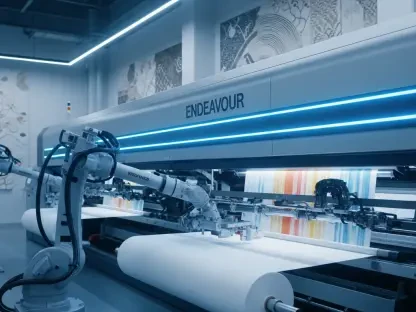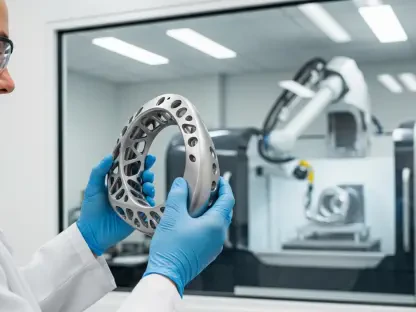As Taiwan continues to solidify its position as a technological powerhouse on the global stage, the role of digital twins has garnered considerable attention within the nation’s manufacturing sector. Serving as virtual replicas of physical systems, digital twins are pivotal in transforming the methodologies by which Taiwanese manufacturers like Delta Electronics, Foxconn, TSMC, and Wistron operate. Leveraging advanced platforms such as NVIDIA Omniverse, these industry giants are reimagining not only how factories are visualized and constructed but also how efficiency is sustained through the lifecycle of manufacturing processes. Such initiatives signify a forward-looking shift that bolsters Taiwan’s status in industrial AI and smart manufacturing. By employing digital twins, manufacturers can simulate and analyze factory operations, enabling real-time optimizations and predictive maintenance that drive efficiency and productivity. The deployment of sophisticated tools to replicate complex manufacturing tasks digitally has become a central tenet for Taiwanese firms aiming to outpace competitors in a rapidly evolving industry landscape. These advancements reflect a broader trend toward integrating artificial intelligence with digital innovation, prompting an industry-wide revitalization that could define the next phase of manufacturing on the island. The seamless interplay of new technologies is not merely an incremental improvement but a wholesale transformation of how manufacturing is envisioned and realized.
Transformative Impact on Factory Operations and Planning
Taiwanese manufacturers are embracing digital twins to revolutionize factory operations and planning, creating a dynamic environment for innovation and efficiency. The incorporation of digital twins in factory environments allows for significant enhancements in resource allocation, process simulation, and workforce training. Factories can now be designed and optimized in virtual settings before any physical construction begins. Companies such as Foxconn utilize platforms built on technologies like NVIDIA Omniverse to streamline robot work cells and assembly lines, integrating AI-driven analytics to ensure operational excellence. This advanced simulation enables engineers to optimize workflows dynamically, paving the way for faster and more cost-effective deployments. The transformation of traditional manufacturing processes through digital twins provides an environment conducive to proactive planning. By simulating entire factory layouts and operations in a digital format, companies can identify potential bottlenecks and inefficiencies before they occur, resulting in significant cost savings and increased productivity. With these digital innovations, Taiwanese firms can develop and deploy autonomous robots with greater precision and adaptability, further enhancing plant efficiency. This approach is key in maintaining a competitive edge by reducing time-to-market for new products and continually refining manufacturing processes for quality and efficiency. The influence of digital twins extends beyond basic operational optimization. Through their use, manufacturers are experiencing a shift in how they approach the very concept of industrial design and planning. TSMC exemplifies this by converting traditional 2D models into detailed 3D simulations, allowing for a comprehensive view of intricate semiconductor fabrication processes. Such detailed modeling not only aids in troubleshooting equipment interactions and optimizing piping systems but also enhances the entire process of defect classification and resolution. The use of NVIDIA’s GPGPU technology further underscores the importance of precision computing in managing the complexities inherent in semiconductor manufacturing.
Enhancing Robotics and Automation Capabilities
A pivotal benefit of digital twin technology lies in its ability to significantly augment robotics and automation within Taiwan’s manufacturing sector. The advanced simulation capabilities offered by platforms like NVIDIA Omniverse allow companies to train and test robots in virtual spaces before they are brought into physical operation. Custom-designed blueprints tailored to specific robotic applications have empowered firms like Foxconn to address complex tasks with unprecedented accuracy, leading to increased reliability and performance. Engineers can simulate the entire spectrum of robotic actions, from simple movement tasks to intricate assembly operations, while ensuring that these actions are executed optimally when implemented on the production floor. This enhanced capacity for robot simulation and training marks a notable advancement in minimizing potential disruptions and errors once robots are deployed. The implementation of virtual training modules allows for iterative testing and development, ensuring that robotic units perform precisely as required without hindering the broader production schedule. By replicating these virtual insights into real-world applications, manufacturers can better allocate resources, streamline maintenance practices, and prolong the operational lifespan of robotic systems. This not only results in improved factory consistency but also provides workers with a safer and more predictable environment in which to operate alongside automated systems. The synergy between digital twins and AI technologies further enhances the potential for real-time improvements within automated settings. Video analytics powered by AI provide insights that can be used to adjust operations dynamically, thereby optimizing performance with speed and accuracy. This level of automation and intelligence ensures that even as manufacturing demands grow more complex, facilities can remain agile and responsive to change. By combining AI with digital twins, Taiwanese manufacturers are not only driving operational efficiencies but also setting new industry benchmarks for integrating human and machine intelligence in production environments.
Innovative Solutions in Plant Development and Efficiency
Innovative digital twin applications have facilitated the development of new-generation plants and boosted efficiencies across existing operations within Taiwan’s manufacturing landscape. Companies like Wistron are leveraging digital twins to create platforms that fuse data connectivity with generative AI tools, enabling real-time visibility and performance monitoring. This strategic deployment of technology enhances operational diagnostics and provides a transparent overview of manufacturing systems. With every facet of factory performance visualized and analyzed, manufacturers can make informed decisions to maximize efficiency and address issues proactively. The transition toward smarter manufacturing processes driven by digital twins is underscored by the dedication of firms such as Wistron to integrate intelligent simulation tools using NVIDIA Omniverse libraries. By simulating robotic actions within these environments, significant reductions in assembly times are achieved, while workers are equipped with curated training content to enhance skills relevant to modern industrial environments. This confluence of machine learning, data analytics, and virtual modeling creates an ecosystem ripe for innovation and adaptive production strategies, resulting in a manufacturing process that is both flexible and rigorous. The benefits of such innovations extend beyond internal operations and have a profound effect on supply chain efficiency and collaboration. Organizations like Pegatron and Quanta Cloud Technology exemplify how digital twin technology can optimize overall logistics by assisting in planning and resource allocation. Through comprehensive team collaboration facilitated by advanced simulation tools, these firms enhance their production timelines and align their practices with global manufacturing standards. The result is a thriving, interconnected manufacturing network that leverages digital twin insights to maintain resilience and adaptability in an ever-changing economic landscape.
The Future of Manufacturing Excellence
As Taiwan continues to establish itself as a major player in global technology, the concept of digital twins is taking the spotlight in the nation’s manufacturing sector. These digital twins represent virtual versions of physical systems and are essential in changing how Taiwanese manufacturers like Delta Electronics, Foxconn, TSMC, and Wistron operate. By using advanced platforms like NVIDIA Omniverse, these companies are not only reimagining the design and construction of factories but also how they maintain efficiency throughout different stages of the manufacturing process. This shift indicates a future-focused move that enhances Taiwan’s role in industrial AI and smart manufacturing. Digital twins allow manufacturers to simulate and analyze factory operations, leading to real-time optimizations and predictive maintenance that boost efficiency and productivity. The digital replication of complex manufacturing tasks has become vital for Taiwanese companies looking to outperform their competitors in a rapidly changing industry. This development is part of a larger trend that sees the integration of artificial intelligence with digital innovation, revitalizing the industry and possibly defining the future of manufacturing on the island. It signifies not just a slight improvement but a groundbreaking transformation in how manufacturing is conceptualized and implemented in Taiwan.









